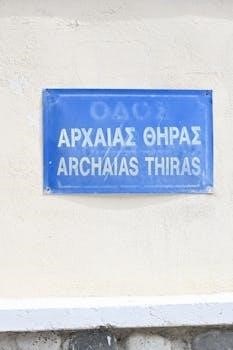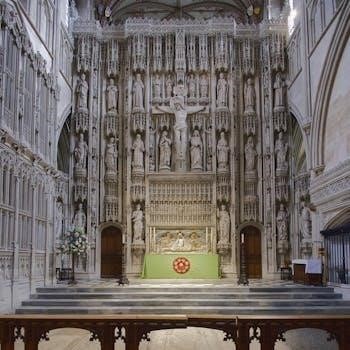mincha prayer in english pdf
Summary
Need a Mincha prayer in English PDF? Download a clear, easy-to-follow version and connect with your faith today! Perfect for daily devotion.

What is Mincha Prayer?
Mincha is the afternoon prayer service in Judaism‚ part of the daily set of prayers. It offers a moment for reflection amidst the day’s activities. Mincha provides an opportunity to connect with the Divine. It serves as a pause for spiritual renewal.

The Significance of Mincha
Mincha holds a unique place in the daily prayer cycle‚ serving as a bridge between the morning and evening. It arrives when individuals are often deeply engaged in their daily routines‚ offering a crucial pause for spiritual reflection. This prayer provides a chance to acknowledge the Divine presence amidst the demands of work and worldly affairs.
The afternoon service is seen as a time for seeking forgiveness and expressing gratitude for the blessings received throughout the day. Mincha allows for a moment of introspection‚ encouraging individuals to evaluate their actions and realign with their spiritual goals.
Furthermore‚ Mincha is associated with themes of redemption and hope‚ reminding worshippers that even in the midst of challenges‚ there is always potential for renewal. By engaging in Mincha‚ individuals reaffirm their commitment to living a life of purpose and meaning‚ guided by Jewish values and traditions. It is a testament to the enduring power of prayer to uplift and inspire.

Time for Mincha Prayer
Determining the proper time for Mincha prayer involves understanding its relationship to the solar day. The earliest time to begin Mincha is half an hour after halachic midday‚ which is not necessarily 12⁚00 PM. Halachic midday is calculated by dividing the time between sunrise and sunset in half‚ then adding that value to the sunrise time.
The ideal time to pray Mincha is before sunset‚ allowing ample opportunity for reflection. There are varying opinions regarding praying Mincha close to sunset‚ but generally‚ it’s encouraged to pray earlier in the afternoon if possible.
In practical terms‚ this means Mincha can be prayed throughout the afternoon. Many synagogues schedule Mincha services in the late afternoon to accommodate those finishing work. Checking a Jewish calendar or consulting with a rabbi will help ensure the prayer aligns with halachic guidelines‚ allowing one to fulfill this mitzvah properly.

Key Components of the Mincha Service
The Mincha service includes key prayers and readings. These components provide structure and meaning. Ashrei is recited‚ followed by the Amidah. Some congregations include Tachanun. These elements create a meaningful afternoon prayer experience.
Ashrei
Ashrei‚ a central prayer in the Mincha service‚ is composed of Psalm 145. It is recited in its entirety. It is a praise-filled declaration of God’s goodness and kingship. Many consider it a vital component of daily Jewish prayer. It is recited during Mincha as well as Shacharit.
Ashrei’s verses highlight God’s compassion and sustenance. The prayer emphasizes God’s support for the fallen. It also focuses on God’s healing of the sick. Reciting Ashrei provides an opportunity to reflect on divine providence. It also allows one to acknowledge God’s role in daily life.
The significance of Ashrei is further emphasized by rabbinic teachings. They highlight the importance of reciting it with intention. Some traditions encourage reciting Ashrei three times daily. This is due to its comprehensive praise of God. Its inclusion in Mincha enriches the afternoon prayer experience.
Amidah (The Standing Prayer)
The Amidah‚ also known as the Shmoneh Esrei‚ is the centerpiece of every Jewish prayer service‚ including Mincha. It is a series of blessings recited while standing‚ hence its name‚ “The Standing Prayer”. During the weekday Mincha‚ the Amidah consists of nineteen blessings. These cover a range of themes‚ including praise‚ requests for divine assistance‚ and gratitude.
The Amidah is traditionally recited silently. It allows individuals to focus on their personal connection with God. The leader repeats the Amidah aloud in the presence of a minyan. This repetition is known as the Chazzan’s repetition.
The Amidah is different on Shabbat and holidays. It is shortened to seven blessings‚ emphasizing the sanctity of the day. Regardless of the day‚ the Amidah remains a profound expression of Jewish faith and prayer.
Tachanun (Supplication)
Tachanun‚ meaning “supplication‚” is a prayer recited on weekdays as part of the Mincha service. It is a plea for mercy and forgiveness. It is a time to reflect on personal shortcomings. Tachanun is characterized by a humble posture. Some congregations recite it while bowing or leaning on their arm.
The specific prayers recited during Tachanun vary among different Jewish communities. The common element is a heartfelt expression of repentance. Certain days‚ such as Shabbat‚ holidays‚ and joyous occasions‚ Tachanun is omitted. This reflects the principle of not expressing sorrow on festive times.
Tachanun offers a moment of introspection. It reinforces the ongoing process of self-improvement. It is a recognition of human fallibility. It is a plea for divine grace and compassion.

Variations in Mincha Services
Mincha services can vary based on the day and community customs. Weekday Mincha differs from Shabbat Mincha. Sephardic and Ashkenazi traditions also influence the service. These variations affect the prayers and readings included.
Weekday Mincha
On weekdays‚ the Mincha service generally includes Ashrei‚ the Amidah‚ and Tachanun. The Amidah is recited silently and then repeated by the prayer leader. Tachanun‚ a supplication‚ is recited on days when it is appropriate according to the calendar. The Torah is not read during weekday Mincha unless it coincides with a special occasion like a fast day. The service provides a structured break during the day. It allows individuals to focus on prayer and reflection. Many find comfort in maintaining this daily connection. The weekday service reflects the rhythm of daily life.
The length of the service is typically shorter than Shabbat Mincha. This allows for those with time constraints to be able to participate. Mincha on weekdays is often a simple‚ yet meaningful experience. Many synagogues and communities offer this service daily. It provides a valuable opportunity for prayer and communal connection. The content focuses on personal reflection‚ along with expressing gratitude. It serves as a spiritual anchor.
Shabbat Mincha
Shabbat Mincha has some notable differences from the weekday service. Typically‚ it includes the reading of the Torah portion for the following week. This is a unique element of Shabbat Mincha. It provides a chance to prepare for the upcoming week’s Torah reading. It is a moment of connection to the weekly cycle.
The service usually consists of Ashrei‚ Torah reading‚ and the Amidah. Tachanun is omitted on Shabbat. The Amidah is the same as the weekday Amidah with some slight variations. During Shabbat Mincha‚ special melodies are often used. This adds to the unique atmosphere of Shabbat. It offers a peaceful transition into the late afternoon.
The Torah reading provides time for reflection on the weekly portion. It fosters a sense of continuity and connection to Jewish tradition. Shabbat Mincha serves as a bridge between the restful Shabbat afternoon and the evening prayers.
Finding Mincha Prayers in English PDF Format
Accessing Mincha prayers in English PDF format is easier than ever. Many synagogues and Jewish organizations offer downloadable resources. These resources help individuals participate in the service. Websites often provide these materials for free. This allows widespread access to prayer texts.
Several online platforms host PDFs of complete Mincha services. These resources include translations and transliterations. This caters to diverse language needs and levels of Hebrew proficiency. Some sites offer versions tailored to specific Jewish movements. They offer options for Ashkenazi‚ Sephardi‚ and Conservative traditions.
Searching for “Mincha prayer English PDF” will yield numerous results. Ensure the source is reliable and aligns with your preferred tradition. These PDFs can be used for personal study or communal prayer. They are particularly valuable for those who are traveling or unable to attend a synagogue.
Resources for Learning Mincha
Numerous resources are available for those seeking to learn more about Mincha. Online platforms offer comprehensive guides and tutorials. These resources explain the structure and significance of the service. Many websites provide downloadable PDFs of the Mincha prayers in English. These materials include translations and transliterations.
Educational websites and Jewish organizations offer articles and videos. These resources delve into the history and meaning of Mincha. They explain the various components of the service. This includes the Ashrei‚ Amidah‚ and Tachanun prayers. Some resources also discuss the variations in Mincha services. They cover weekday‚ Shabbat‚ and High Holiday observances;
Books on Jewish prayer and practice often dedicate sections to Mincha. These books provide in-depth explanations and insights. Local synagogues and Jewish community centers may offer classes. This learning opportunity is a great way to learn about the prayer.
The Experience of Praying Mincha
Praying Mincha offers a unique spiritual experience. It provides a moment to pause and reflect during the busy afternoon. Many find solace and connection to the Divine. This happens by engaging in the prayers and rituals.
The act of reciting the Ashrei psalm can bring a sense of gratitude. The Amidah allows for personal reflection. It provides an opportunity to express hopes and needs. Tachanun offers a moment for introspection and repentance.
Some find the communal aspect of praying Mincha particularly meaningful. Praying with a minyan strengthens the sense of community. Others prefer the quiet contemplation of praying alone. The timing of Mincha‚ between midday and sunset‚ can also enhance the experience. It offers a transition point in the day; It allows for a shift in focus from worldly concerns to spiritual matters. Ultimately‚ praying Mincha is a personal journey.